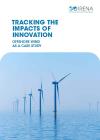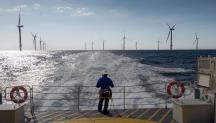

-
-
IRENA (2021), Tracking the impacts of innovation: Offshore wind as a case study, International Renewable Energy Agency, Abu Dhabi
Copied
/-/media/Files/IRENA/Agency/Publication/2021/Jun/IRENA_Impacts_Innovation_2021.pdf
Copied
Tracking the Impacts of Innovation: Offshore wind as a case study
Newsletter
Clean energy technology innovation – particularly research, development and demonstration (RD&D) – plays a critical role in accelerating the global energy transition. As this transition progresses and ambitions grow, the need for strong government support for innovation grows alongside it. Innovation support is a combination of multiple measures, including RD&D funding (from the public and private sectors), market instruments and policy measures. Together, these guide and encourage innovation activities.
This report from the International Renewable Energy Agency is an initial output of two interlinked projects focused on tracking innovation impacts: first, the Innovation Impacts Dashboard (IID) project – funded by the government of the United Kingdom – and second, the Tracking Energy Innovation Impacts Framework (TEIIF) project, funded by the Horizon 2020 Programme of the European Union (EU). Those projects both also contribute to the Mission Innovation Tracking Progress workstream.
Offshore wind was chosen to pilot an initial methodology. This methodology looks at a range of indicators that, when considered together, may provide additional qualitative and quantitative insights into ways in which innovative energy technologies are making progress, either fully or in part due to RD&D activities.
The methodology analyses 30 indicators across three categories:
I. Innovation ecosystem with the objective of an active, growing and broadening innovation ecosystem.
II. Technology progress with the objective of a continual improvements in technology in the form of declining costs, improving technology performance and a widening range of solutions.
III. Market formation with the objective of a growing and broadening market moving towards maturity.
The main output of the pilot is an online dashboard, which provides a visual presentation of indicators, showcasing trends and the geographical distribution of activities in offshore wind.




